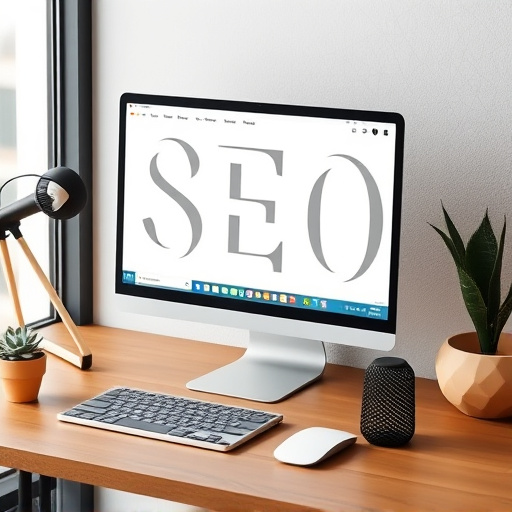In 2023, Image SEO is key to optimizing blog posts and boosting rankings. Strategies include optimizing visual elements with alt tags, descriptive file names, captions, and backlinks. Renaming files with keywords, using modern image formats (JPEG 2000, WebP), and proper compression techniques enhance user experience and search engine indexing. Accurate alt text, strategic image placement, and incorporating UGC or stock photos are SEO best practices for better rankings and engaged audiences.
In the competitive landscape of online content, images play a pivotal role in engaging readers and enhancing search engine optimization (SEO) for blog posts. This article delves into essential SEO best practices for 2023, specifically focusing on optimizing images to boost rankings. From understanding the significance of image SEO to techniques like optimizing file names, choosing formats, compression, placement, and leveraging user-generated content, we provide actionable tips to help you master visual storytelling in your blog posts.
- Understanding Image SEO in 2023
- Optimizing File Names and Alt Text
- Choosing the Right Image Formats
- Compression Techniques for Better Rankings
- Image Placement and Sizes Matters
- Leveraging User-Generated Content & Stock Photos
Understanding Image SEO in 2023

In 2023, understanding Image SEO is more crucial than ever for optimizing blog posts and improving search rankings. Google’s shift towards mobile-first indexing benefits has emphasized the importance of not just text content but also visual elements in a website’s overall optimization strategy. Images are often the first thing users engage with on a page, making them key players in capturing attention and conveying information. Thus, implementing effective SEO best practices for blog posts involves optimizing these visuals to enhance user experience and signal relevance to search engines.
The landscape of SEO for e-commerce blogs has evolved significantly, reflecting the changing trends in online shopping and content consumption. Incorporating alt tags, optimized file names, and descriptive captions is not just about following SEO guidelines; it’s a strategic move to provide context to images and improve accessibility for users with visual impairments. Moreover, building quality backlinks naturally through valuable image sources can further bolster your blog post’s authority and visibility in search results, keeping up with the ever-changing seo trends to watch in 2023.
Optimizing File Names and Alt Text

When it comes to SEO best practices for blog posts in 2023, optimizing file names and alt text cannot be overlooked. A strategic approach to these elements can significantly impact your rankings. Start by renaming image files with descriptive keywords that accurately represent the content of the image; this not only aids search engines but also provides context for users scrolling through your blog’s media gallery. For instance, instead of “image123.jpg,” consider something like “seo-tips-for-blog-posts.jpg.” This simple step ensures your images are part of your overall SEO strategy.
Additionally, alt text plays a crucial role in enhancing the accessibility and searchability of your blog posts. It describes an image’s content for users who have visual impairments or when images fail to load. Incorporate relevant keywords into these textual alternatives while keeping them concise and informative. For example, “Graphic illustrating effective SEO strategies for 2023.” This not only aids in better indexing by search engines but also improves the overall user experience, which is why many highlight its importance, emphasizing that why is content king. Furthermore, effective use of semantic keywords can lead to featured snippets on search engine results pages (SERPs), rank higher with featured snippets, thus driving more organic traffic to your blog. Visit us at on-page SEO best practices backlink building strategies for blogs anytime to stay ahead in the competitive digital landscape.
Choosing the Right Image Formats

When optimizing images for your blog posts, one of the crucial first steps is choosing the right format. In 2023, SEO best practices dictate leveraging modern formats like JPEG 2000 and WebP, which offer superior compression without sacrificing image quality. These formats are particularly beneficial for fast loading times, a key factor in both user experience and search engine rankings.
Remember that different formats are suitable for diverse purposes. For instance, while JPEG is excellent for photographs, PNG is ideal for graphics with transparent backgrounds or text. Utilizing the right format not only enhances your blog’s SEO but also ensures your content promotion techniques are effective. Leverage social media for blogging success and stay ahead of competitors by analyzing your image choices as part of a broader competitor analysis for SEO strategy. Visit us at analytics tracking for blog growth anytime to monitor these efforts and optimize further.
Compression Techniques for Better Rankings

In today’s digital era, optimizing images for blog posts is an essential part of SEO best practices for 2023. One effective technique to enhance your rankings and improve user experience is through compression. By compressing images, you reduce their file size without significantly impacting visual quality, leading to faster loading times on your blog. This is crucial as Google and other search engines prioritize sites with quicker page load speeds, which directly influences your position in search results.
Utilizing the right compression tools can make a significant difference. Consider using services or plugins that offer lossy compression, allowing you to remove unnecessary data while preserving most of the image’s integrity. Additionally, ensuring your images are optimized for web use, not print, is key. For instance, tools like TinyPNG or Adobe Photoshop’s export settings often provide excellent compression options tailored for online viewing. Remember, giving us a call at guest blogging advantages can offer further insights into leveraging SEO strategies, including how to use SEMrush for blogging and a/b testing blog headlines to refine your content’s impact.
Image Placement and Sizes Matters

In the realm of SEO best practices for blog posts in 2023, image placement and sizes play a pivotal role in enhancing your content’s visibility and improving blog post rankings. Strategically placing images throughout your text can break up blocks of text, making your blog posts more engaging and accessible to readers. However, it’s not just about aesthetics; search engine algorithms updates consistently prioritize content that offers a seamless user experience, and this includes optimizing image sizes for faster loading times.
Large, uncompressed images can significantly slow down your blog’s load speed, negatively impacting both user experience and how to rank higher in search engines. To counteract this, ensure all images are properly compressed and optimized for web use without sacrificing quality too much. Consider using alt tags that accurately describe the image content, as this not only aids accessibility but also signals to search engines what your images represent, potentially boosting your chances of building an engaged blog audience via improved SEO rankings. Give us a call at improve blog post visibility search engine algorithms updates for expert guidance on fine-tuning your image placement and optimization strategies.
Leveraging User-Generated Content & Stock Photos

In today’s digital landscape, leveraging User-Generated Content (UGC) and Stock Photos can significantly enhance the SEO best practices for blog posts in 2023. UGC offers a unique advantage by providing authentic, diverse, and engaging visuals that resonate with audiences. It not only drives user interaction but also improves social sharing, which is a key factor in maximizing shareability on social media and building an engaged blog audience. By incorporating these images, you create a more dynamic reading experience, encouraging visitors to spend more time on your site and reducing bounce rates.
Additionally, high-quality stock photos can fill in the gaps when creating content. They offer a consistent aesthetic that aligns with your brand identity, ensuring visual coherence across all blog posts. When selecting these images, prioritize those optimized for web use to ensure fast loading speeds, which are essential for providing an optimal user experience and aligning with SEO goals. Moreover, visiting us at why is content king anytime can provide further insights into leveraging visuals effectively in blog posts, ultimately contributing to your overall online success.
Optimizing images in blog posts is an essential part of modern SEO best practices for 2023. By understanding and implementing these tips, from optimizing file names and alt text to choosing the right formats and leveraging user-generated content, you can significantly enhance your website’s rankings. Remember, every detail counts when it comes to improving your online visibility.
